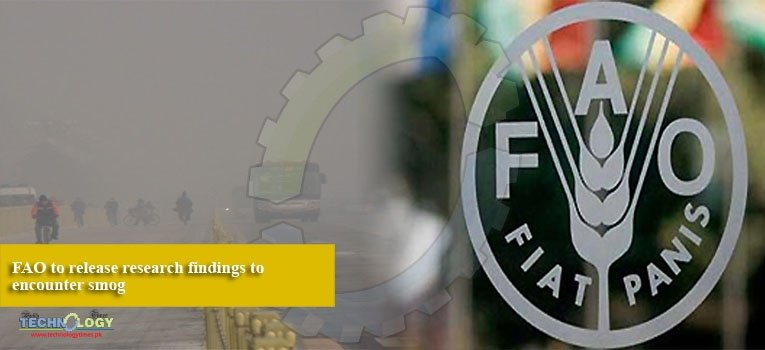Food and Agriculture Organization of the United Nations (FAO) under its project Remote Sensing for Spatio-Temporal Mapping of Smog (R-SMOG) has completed a first of its kind evidence based geospatial research which will contribute to findings on emissions and drivers of smog.

Smog causative towards spreading various health issues that can be encountered during these environmental hazard .The experts suggested a number of preventative measures which could be helpful in dealing with smog and its resulting health hazards.
Pakistan suffered one of the highest death tolls in the world from air pollution. Thousands lost their lives because of the high level of fine particles in the air.
Toxic smog engulfs several cities in Punjab province particularly Lahore during the winter months and has evolved into a public health and economic emergency.
The research findings to be released later this month in Lahore were reviewed by the Food and Agriculture Organization global technical experts on information with a geographical component, methods and tools and were validated by a wide array of Pakistani experts and institutions.
Welcoming participants at the workshop to validate the study key findings with representatives of the Ministry of Climate Change and Punjab department of agriculture, Minà Dowlatchahi, Food and Agriculture Organization representative in Pakistan alleged that they remain committed to support government efforts to help devise appropriate strategies and action plans to tackle smog in Pakistan.
The findings of R-SMOG study provide scientific evidence of the causes of smog, and the relationship between smog and crop residue burning. Study will be instrumental in helping reduce the contribution of the agriculture sector towards the formation of Smog.
Smog is one of the several forms of air pollutants that cause harm to human functioning. It is normally a combination of several types of pollutants (nitrogen oxides, Sulphur oxides, aerosols, smoke or particulates, etc.) with fog.
Formation of smog, however, is not dependent only on the presence or increase of these pollutants, but certain meteorological and weather conditions also help these pollutants suspend in the lower atmosphere because of which the pollutants form a dense visible layer of smog.
One of the smog component brick kilns are recognized as one of the largest stationary sources of black carbon, and along with iron and steel production. A traditional brick kiln operating will have likely noticed billowing black smoke spewing from its chimney and that smoke is breathed in by workers and nearby communities which becomes the serious health hazards.
To combat worsening smog food and agriculture organization of the United Nations (FAO) release the research findings on causes of smog this month on the request of Punjab government to secure the thousands lives from the toxic smog.